Photo exposes Sydney’s unseen cost-of-living crisis
A photograph of a huge line in Western Sydney has revealed the true extent of the city’s cost of living crisis, as even children line up for a crucial service.
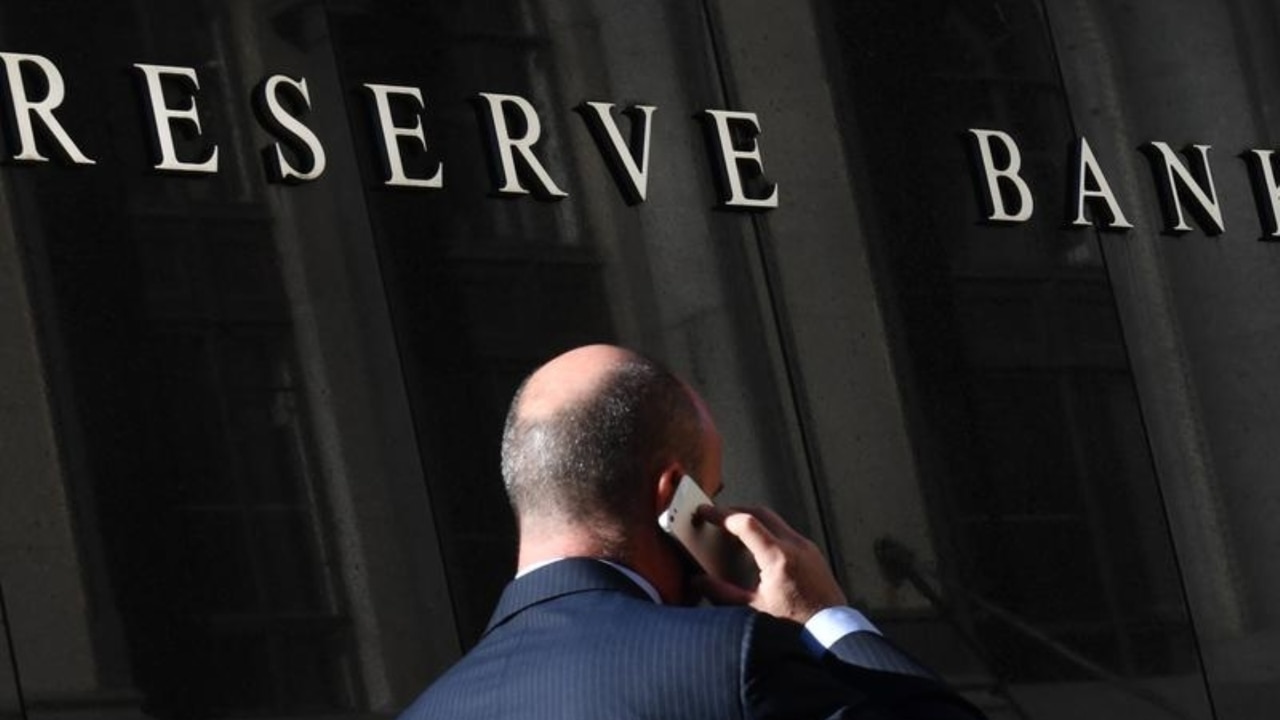
More than 200 people a day are expected to access a free community food bank, which reopened to lengthy lines of people struggling with the rising cost-of-living.
Founder and CEO of Community Cafe, a food and meal service in southwest Sydney, Kirsty Parkes said growing interest rates, rising rents and increasing grocery prices have led to a rise of the “working poor” accessing Community Cafe’s services.
The Hoxton Park resident began the food outreach program in July 2021, while the predominantly low-income Liverpool LGA was gripped by a suburb-based lockdown.
The tough restrictions meant people weren’t able to travel to access their normal food relief programs.
The community service reopened after an 11-day renovation on Monday, which previously helped more than 200 people a day. By 11am, 18 people had already joined the queue, with some arriving before 10am.
By 3.30pm the line had grown to more than 30 people, with families coming in from the after school pick up.
“From 3pm, we have two lines coming into the store, with a kids-only section where they can take items for their lunch box,” Ms Parkes told NCA NewsWire.

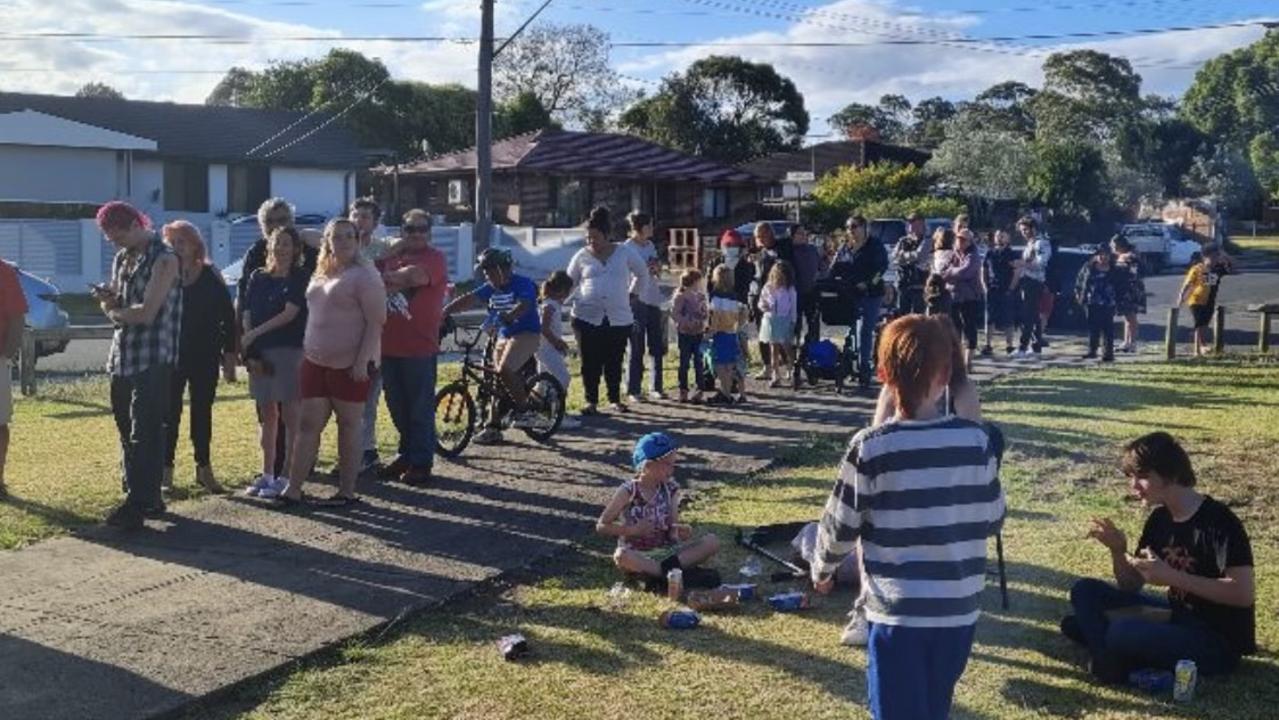
Nearly two years on from her first service, she says the cost-of-living crisis has gotten worse, especially for Sydney’s southwest suburbs, like Miller, Sadleir, and Liverpool.
Ms Parkes, who is from the community herself, affectionately describes the area as “the ghetto”.
“A lot of people are trying really hard. They’re working, they’re paying their bills, they’re paying their rent, they’re paying their mortgage,” she says.
“This is a low socio-economic area but those who are working are not getting better. The pay that they’re getting is still not enough to cover that mortgage rates are up.”
For the people who need to access her services, her approach has remained the same: “Take what you need, no questions asked,” she says.

For people lining up for the Community Cafe, the rising cost of groceries, petrol and utilities have made stretching already tight budgets all the more difficult.
Local resident Sarah Burchell, 42, says grocery prices have only gotten more expensive since Christmas.
“You used to be able to buy half a kilo of mince for $6, now it’s $10. Someone goes it’s only $4 but but the time you’ve done your shopping it’s an extra $50, or $100. It all adds up,” said Sarah Burchell, 42.
“I used to be able to do our weekly shop for like $250. Now we’re lucky if it doesn’t cost me more than $350.”
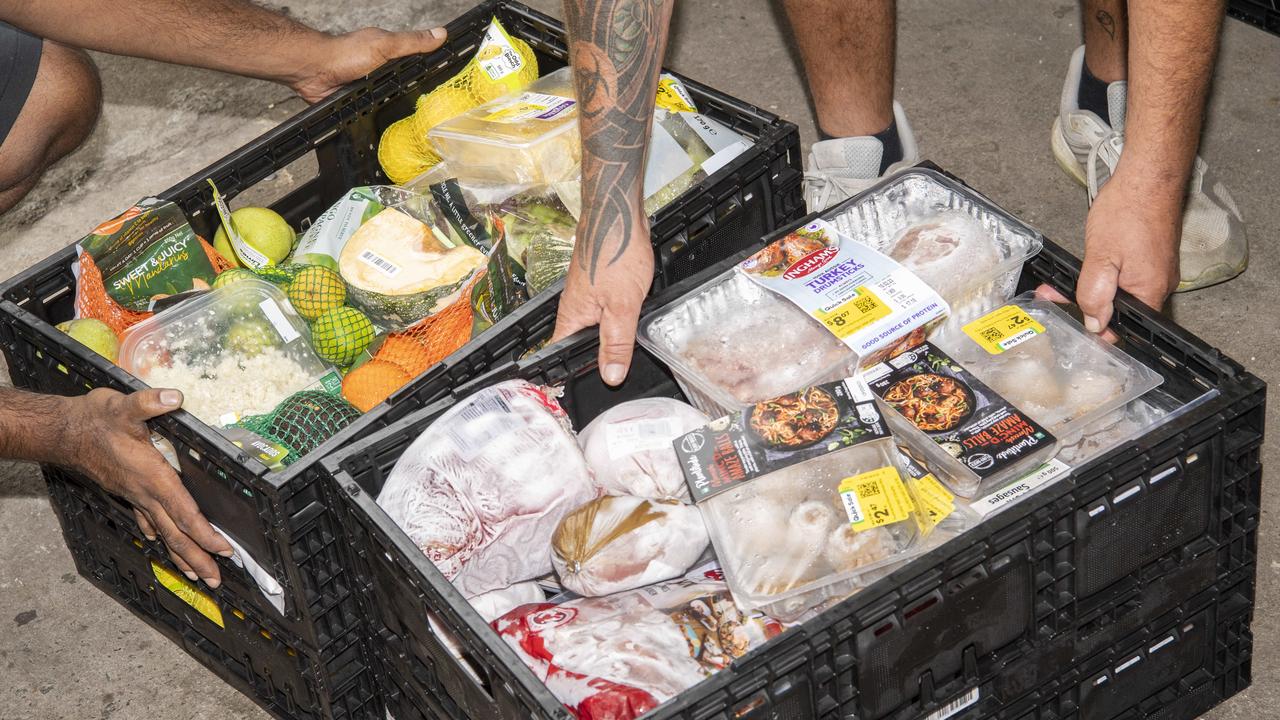
Her friend, Kelly Butters, 50, says basic decision like where to buy petrol, can become a maths equation.
“You’ve got to try and get it as cheap as you can but sometimes it’s not worth it, because you’re driving there and spending more money to get to get the cheaper price,” she says.
“As much as you go, this is my budget, this is what I’ve got available to spend, you can’t do that as much anymore because you don’t know what the prices are going to be.”
Acting as her husband’s carer, Ms Butters adds that factoring for things like specialist appointments, medication, plus hospital parking three days a week has added to the strain of her household’s budget.
“If you pay $300 for a specialist, you’ve got to have that $300 in your bank account and you might get $20 back on Medicare. But you can’t around and go: ‘No can’t see them,’ my husband’s life depends on it,” says Ms Butters.
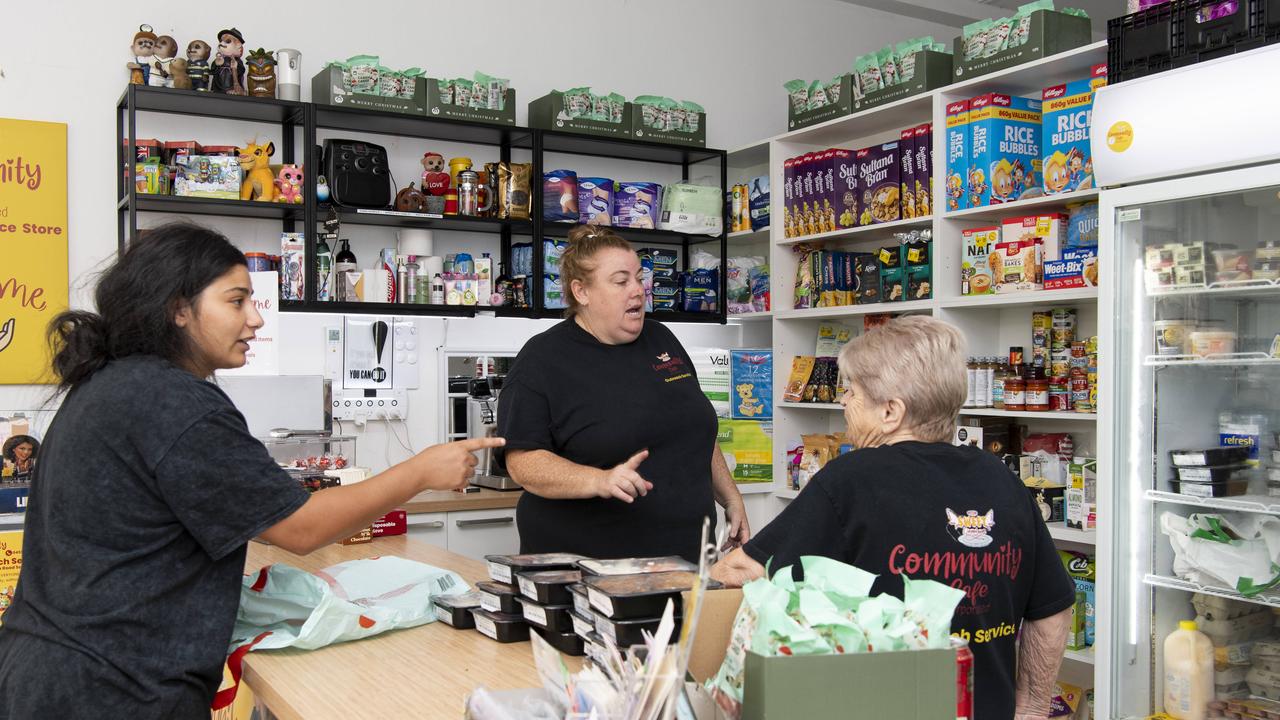
Leaving the store with two bags of groceries, Ms Burchell says the assortment of pantry and fridge staples like bread, cheese, and lunch box snacks would have cost her about $70 at a supermarket. Her savings will now go towards petrol, electricity and gas bills and uniform, excursions and schooling costs for her son.
“I’ve got a five-year-old who just started school, so I’m thinking of things that he can put in his lunch box because that’s really expensive,” she said.
“The jacket alone was $40 because it has that little logo. His school shirt is $35.
“When we went to school it was just a polo shirt in the school shirt but now you need that little emblem and you don’t want your kids to miss out.”
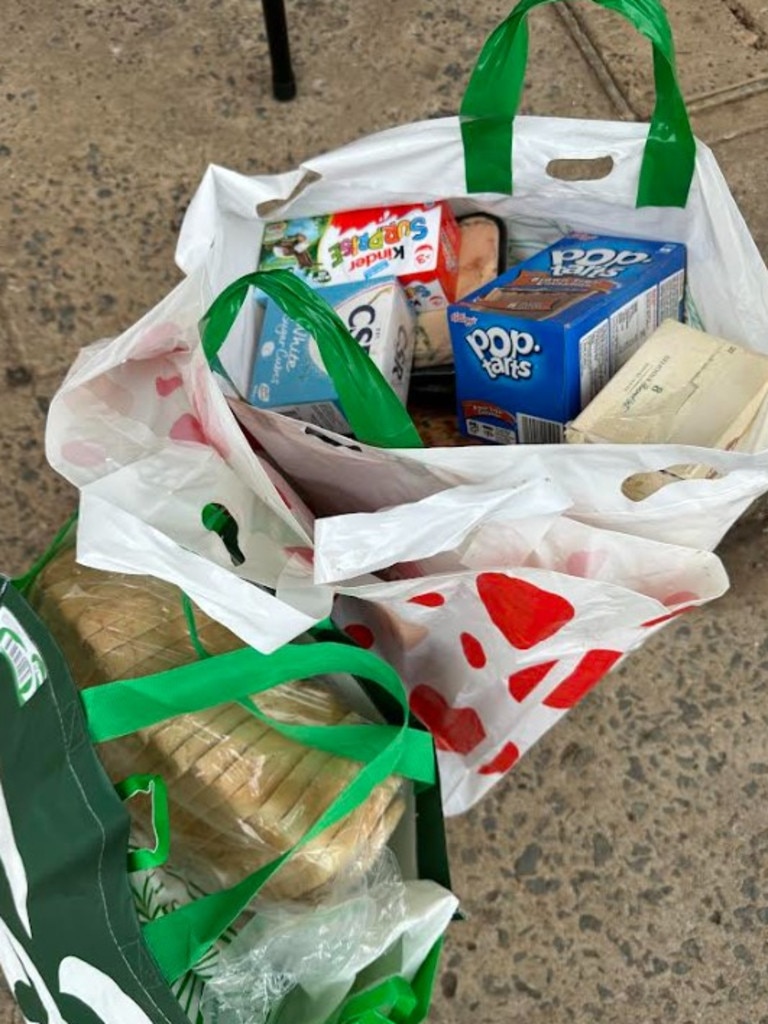

Holding two bags of groceries – which she estimates would have cost her about $40 at the supermarket – Ms Butters said she plans on freezing the bread to “make the food go longer”.
“It’s less you’ve got to buy. It’s definitely helpful,” she says,
“My pay this week is $140 from the carer’s allowance. $40 worth there means I’ve got $140 I can spend, instead of $100.”



